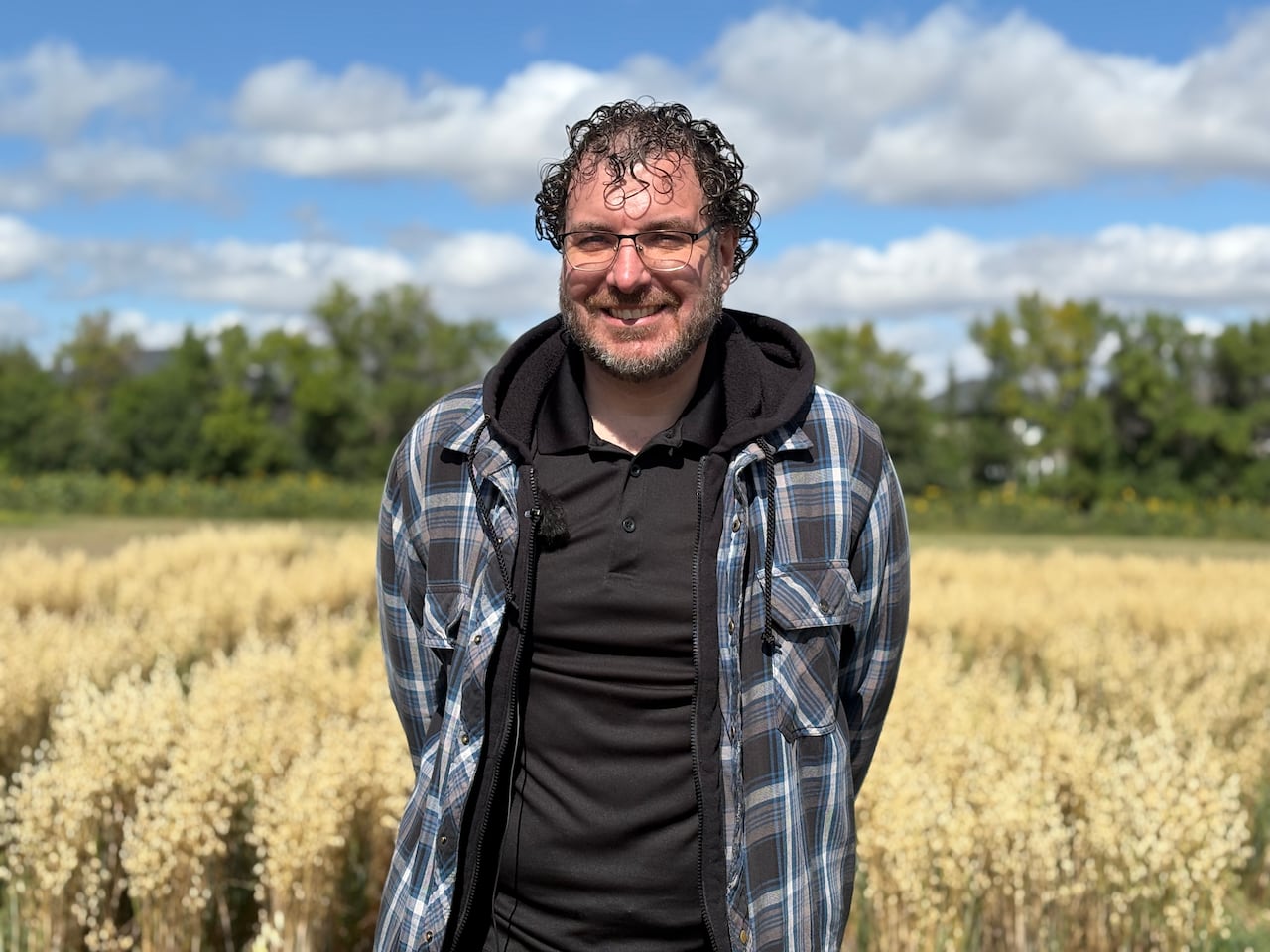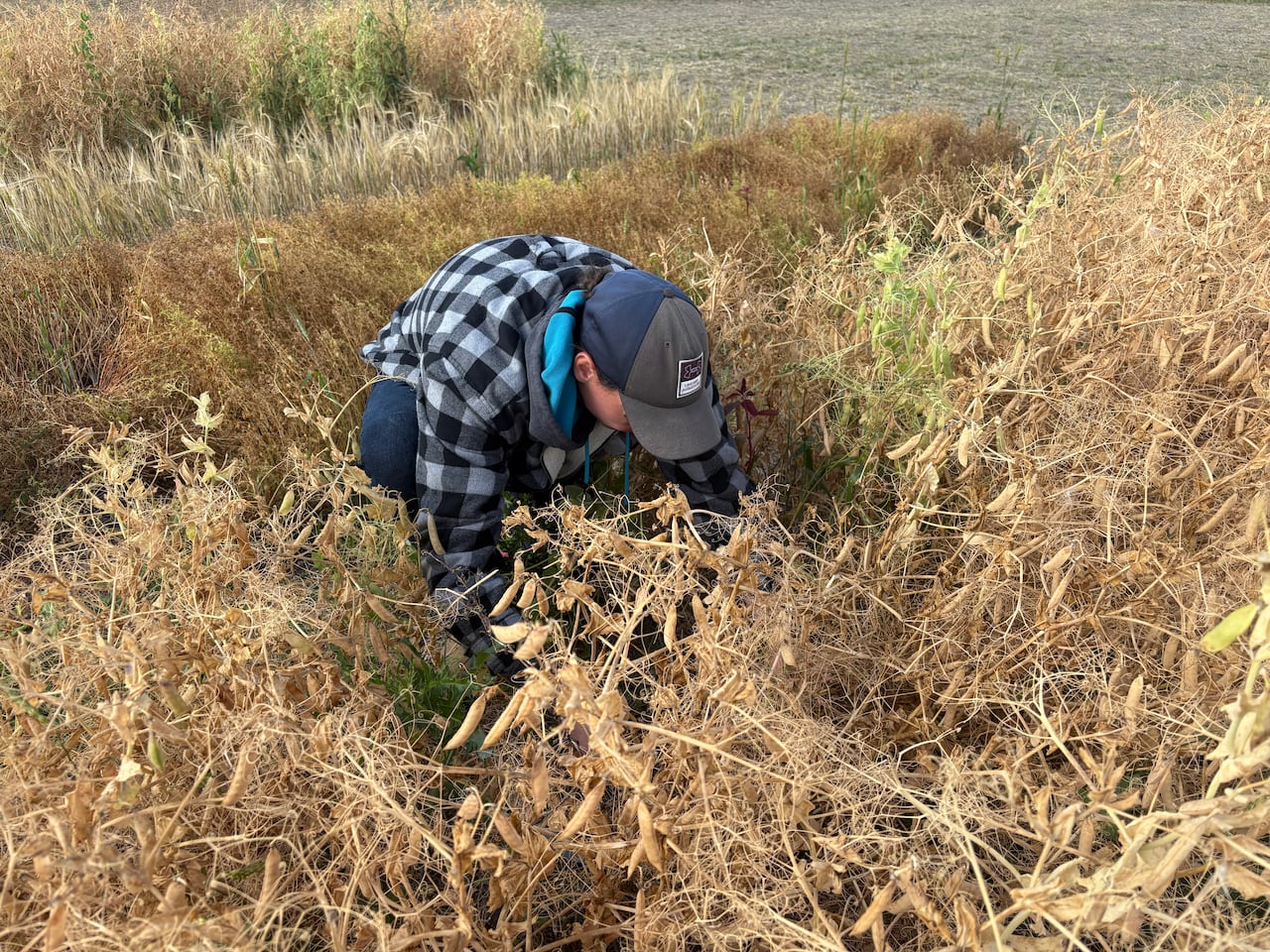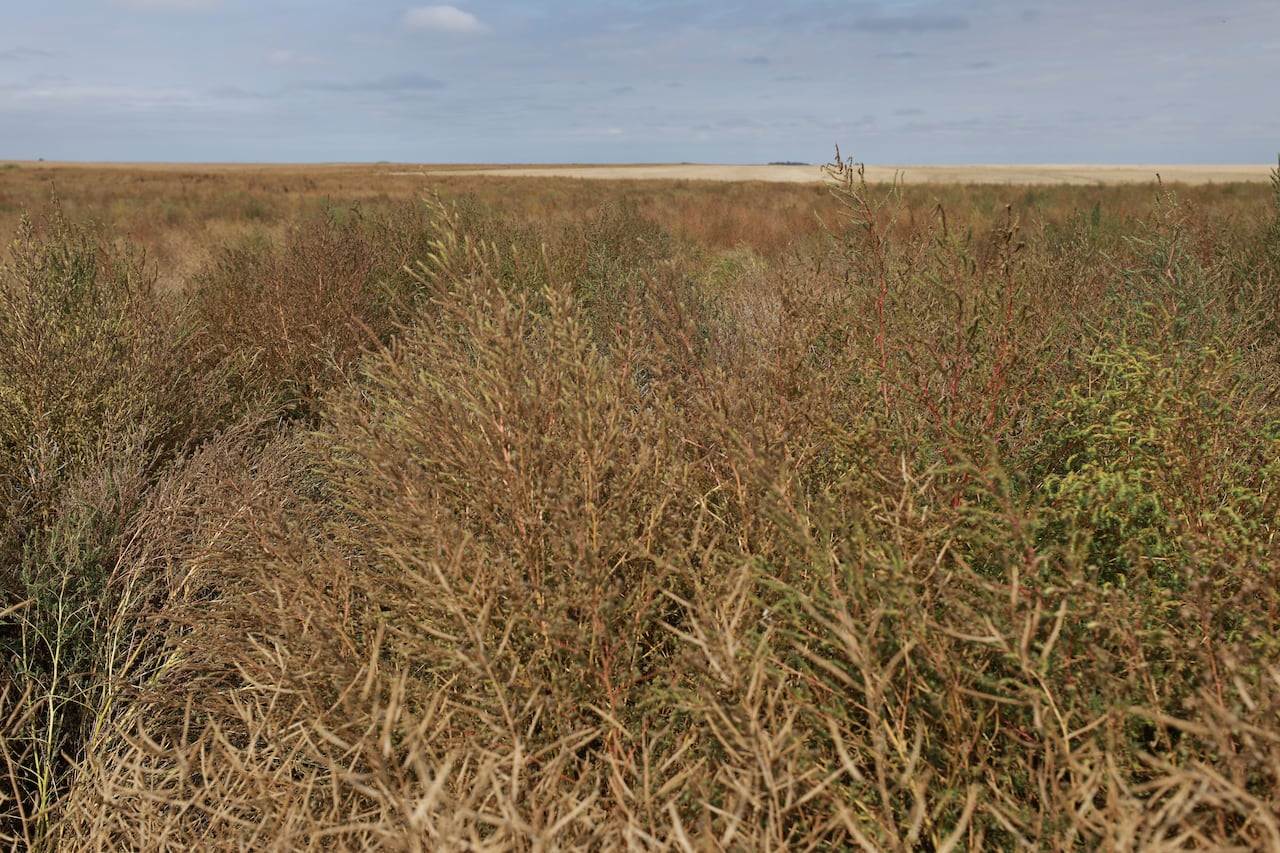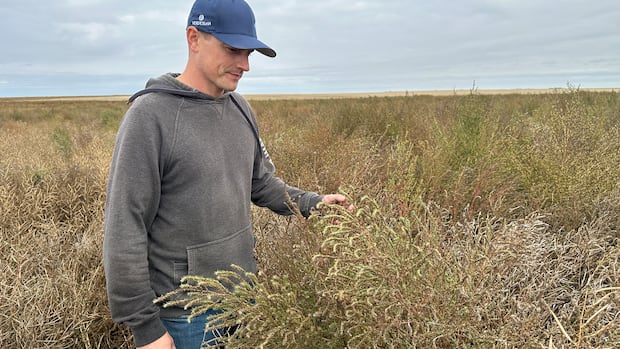Kochia weeds stand as tall as Jake Leguee’s waist at his family farm near Fillmore, Sask.
This year’s lentil and flax fields, about 100 kilometres southeast of Regina, have been choked out by the invasive tumbleweed.
“One kochia plant can do a lot of damage,” Leguee said. “That one seed turns into thousands.”
Kochia has always thrived in drought conditions. Now, its resistance to herbicides is growing, and it’s costing farmers.
“Every time we’re in the field, we’re spraying for kochia,” Leguee said.
‘A significant expense’
Leguee spends hundreds of thousands of dollars annually on herbicides, spraying the tough-to-kill weeds multiple times a week.
In previous years, kochia could be killed using Group 14 herbicides, a product three times more costly than older herbicides. Now, those can’t even eradicate the weeds.
Last year, Leguee purchased a $100,000 weed exterminator add-on to his combine, hoping that would do the trick.
“This is a significant expense to add to a machine like that,” Leguee said. “It’s harder for smaller farms to adapt some of these tools and that is a concern long-term.”
Despite these costly investments, Leguee has been unsuccessful in taming the beast.
Experts say while kochia has been confined to the southern prairies for years, it’s now rapidly spreading.
“A couple of years ago, I would always hear growers saying, ‘We don’t have kochia; we’re not going to get it,’” said Shaun Sharpe, a scientist with Agriculture and Agri-Food Canada who specializes in invasive weeds. “And now the story is, we’ve got it and it’s moving north.”

Sharpe said kochia has been detected in Saskatchewan as far north as Blaine Lake, about 80 kilometres north of Saskatoon, in the province’s northern grainbelt.
In Alberta, the weed has been found in the Peace Country region in the province’s northwest.
It’s moving north as a result of climate change and deforestation, Sharpe said.
“We’ve done a lot of cutting down tree lines, which would block the wind,” he said. “Now, it has a wide open prairie it can just tumble and fly through.”
Trying to stop the spread
Now, Agri-Food scientists like Sharpe are stepping up. His team is researching ways to clamp down on kochia, such as running tests on sister variants and providing education to farmers on how to identifying the species on their land.
“It took a while to learn how to ID it,” Sharpe said. “These are growers that didn’t have to deal with it previously.”
Scientists are also monitoring two other herbicide-resistant weeds, known as waterhemp and palmer amaranth. Their seeds travel through grain, animal feed and through the animals themselves, as they’re not something their bodies can properly digest.

The plants are already present in Manitoba and in North Dakota.
Sharpe estimates that the weeds, known for being more difficult to eradicate than kochia, will infiltrate Saskatchewan in less than five years.
“Kochia is bad enough as it is and a lot of growers struggle with it,” Sharpe said. “So having a weed that has that same caliber of competition come in can be disastrous, especially for our progression into crop diversification.”
Tyler Smith, a botanist with Agriculture and Agri-Food Canada in Ontario, told CBC that a lack of existing research is making it difficult to track invasive patterns.
“We’ve got lots of really good data for precipitation and temperature,” Smith said. “We don’t have a lot of data on how these plants are interacting, how the weeds might be interacting with other things in the environment, what kind of soil requirements they might have.”

In southern Saskatchewan, Leguee’s harvest is almost over. He’s hoping for better results after a second year using the weed terminator on his combine.
But Leguee said the spread of kochia is affecting food production, making it harder to turn a profit.
“It’s a problem in our cereals,” Leguee said. “It can be a problem in our canola and every time we get a patch of kochia, there’s less yield there, there’s less production.”
“It could reduce the ability for our farm to turn a profit, reduce our ability to continue to do this.”







